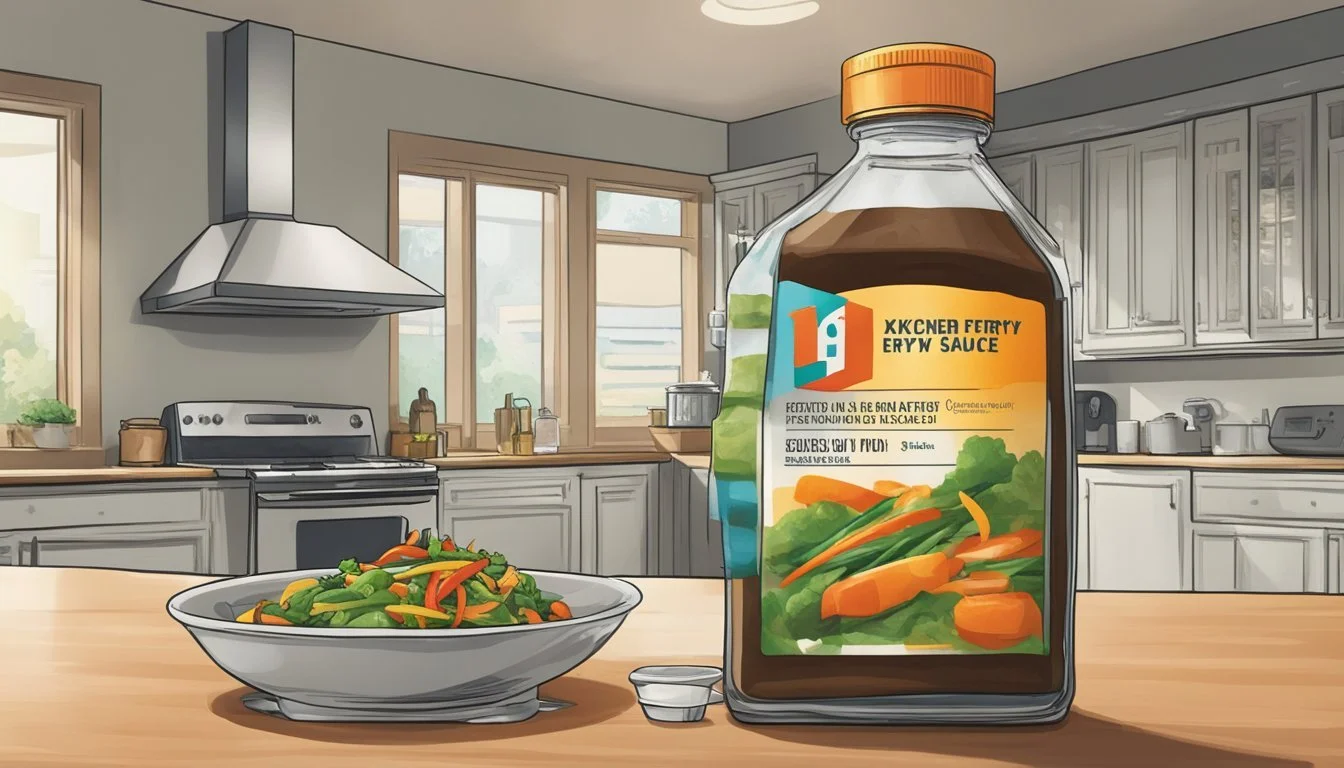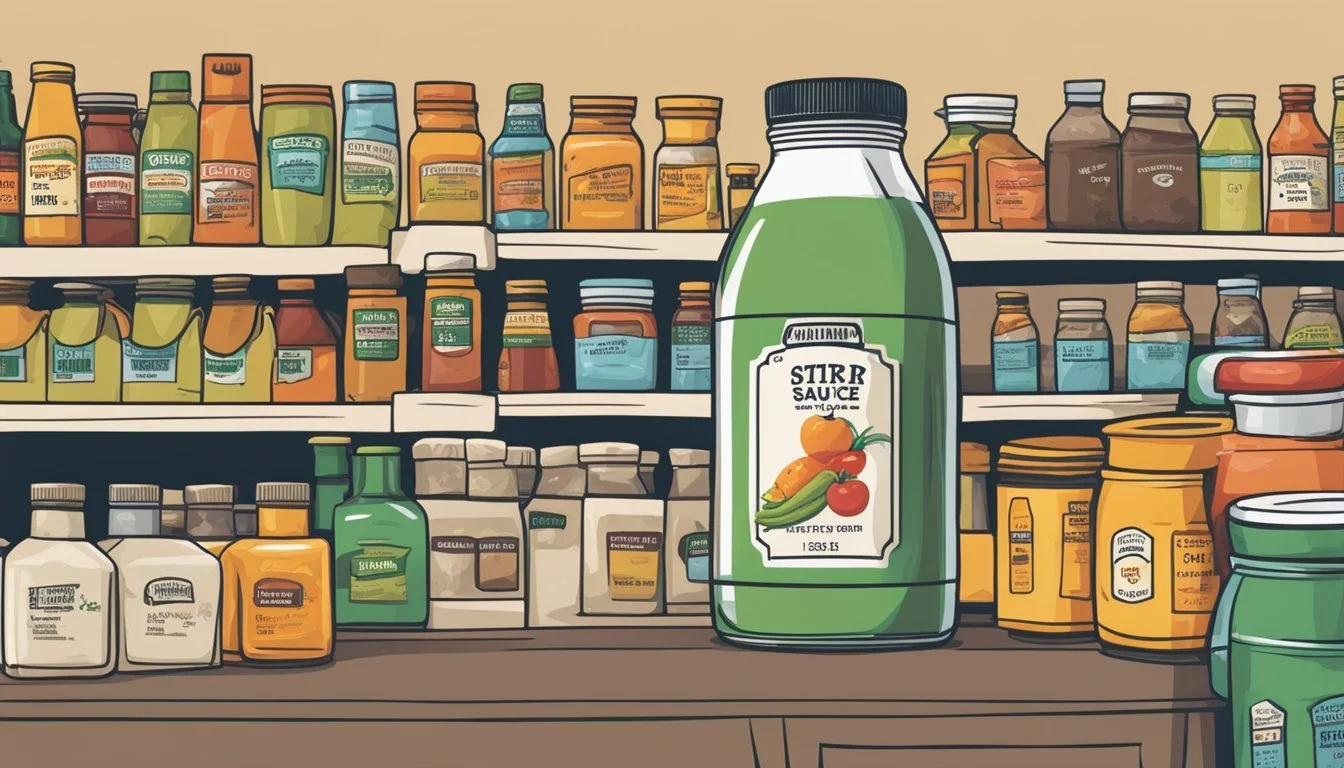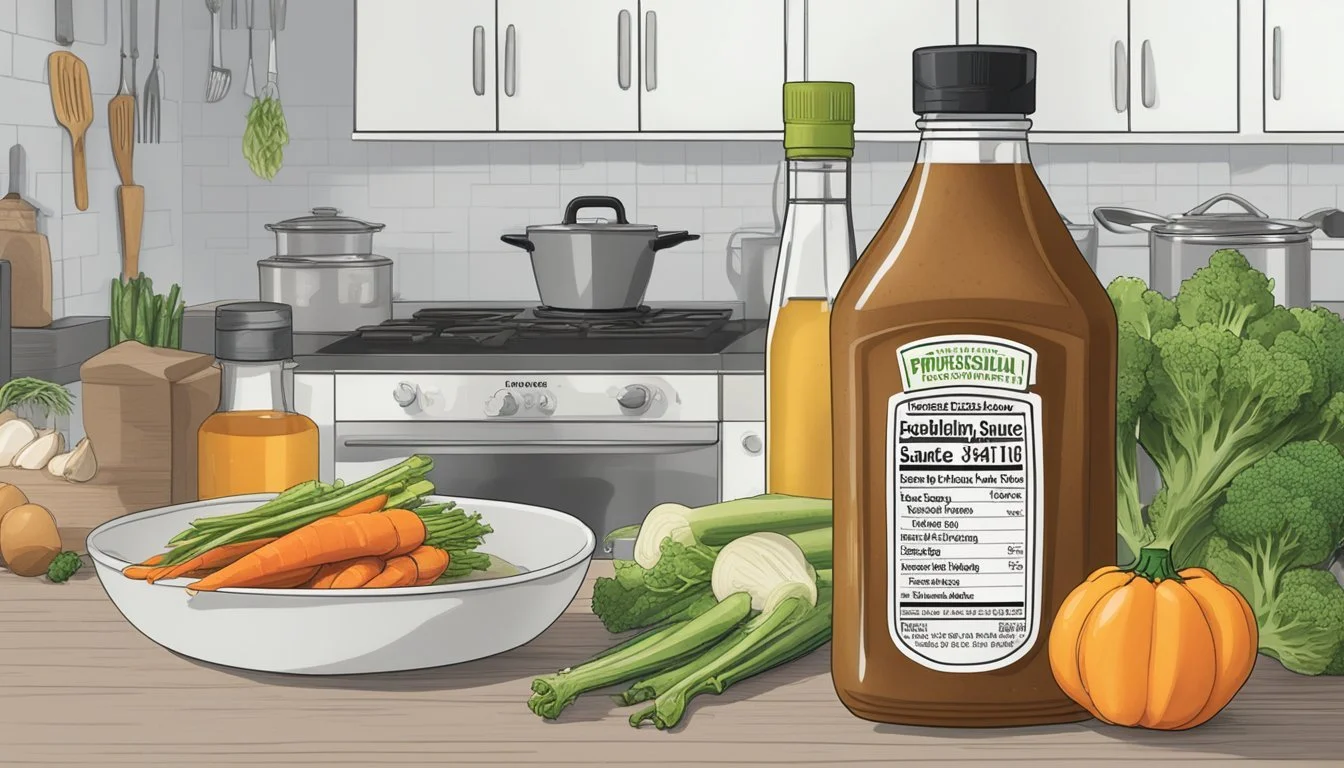Is it Safe to Use Expired Stir-Fry Sauce?
Understanding Food Safety Limits
When assessing the safety of using expired stir fry sauce, it’s important to understand the distinction between a product’s expiration date and its actual shelf life. Stir fry sauce, like many other condiments, contains preservatives that extend its longevity, allowing unopened bottles to last well beyond a year when stored properly. The expiration date serves as the manufacturer's estimate for peak quality rather than an exact marker for when the product becomes unsafe.
Once opened, stir fry sauce’s shelf life typically reduces to a few weeks, provided it is refrigerated and sealed tightly after each use. During this period, there is a gradual decline in the flavor quality, but the sauce remains safe to consume. However, visual and olfactory inspections should be performed as the sauce approaches or surpasses the labeled expiration date. If any signs of spoilage such as mold, an off smell, or color changes are present, the sauce should be discarded irrespective of the indicated date.
The key to using stir fry sauce past its expiration is vigilance and proper storage. While consumption slightly after the expiration is not inherently risky, consumers should employ their senses and best judgement before use. It’s always more prudent to err on the side of caution, especially when it comes to food safety.
Understanding Expiry Dates
When examining the safety of using expired stir-fry sauce, it’s essential to understand the terms used on packaging to indicate the product's lifespan. These terms help consumers make informed decisions about product freshness and safety.
Expiration Date, Best By, and Best Before Labels
Expiration Date: This is the date after which the manufacturer no longer guarantees optimal quality or safety of the food product. A product past its expiration date may not be safe to consume.
Best By or Best Before: Unlike the expiration date, "Best By" and "Best Before" dates are indications of quality rather than safety. Products are still likely to be safe after these dates but may not be at their ideal quality.
Shelf Life: Refers to the duration a product is expected to remain at its best quality when unopened and stored properly.
Label Information: Always comprises the "Best By," "Best Before," or "Expiration Date," and is set by manufacturers as an estimate of how long the product will maintain its peak quality.
Factors Affecting Shelf Life
Several factors determine the longevity of a stir-fry sauce's shelf life:
Preservatives: The inclusion of preservatives can extend a sauce’s shelf life significantly.
Packaging: Proper sealing and the materials used can prevent exposure to external factors that may degrade the product.
Storage Conditions: Temperature and humidity affect a product’s shelf life. Refrigeration after opening is typically recommended for stir-fry sauces.
Storage Condition Impact on Shelf Life Refrigeration Extends shelf life and maintains quality Room Temperature May shorten shelf life and affect quality quickly High Humidity Can lead to spoilage and degradation
Each of these elements interacts with the intrinsic qualities of the sauce to define its useable timespan. It is prudent for consumers to check a product's label and store it as instructed to ensure its longevity and safety.
Storing Stir-Fry Sauce
Proper storage of stir-fry sauce is essential to maintain its quality and safety. Below are the specific conditions and methods that should be adhered to for both opened and unopened sauce containers.
Optimal Storage Conditions
To extend the shelf life of stir-fry sauces, they should be kept away from direct sunlight and in a cool, dry place, like a pantry or kitchen cupboard. An area that maintains a consistent temperature is ideal to avoid the degradation of flavors and quality.
Refrigerating Opened Sauces
Once opened, stir-fry sauce must be refrigerated. The refrigerator should maintain a steady and appropriate temperature to ensure the sauce remains safe to consume. Opened sauces should ideally be kept in an airtight container to prevent contamination and further preserve their taste and integrity. Most opened stir-fry sauces will last well for 3-4 weeks when stored properly.
Storing Unopened Sauce
Unopened stir-fry sauce benefits from storage that keeps the container sealed and unexposed to fluctuating temperatures. Unopened sauces typically can last past the expiration date printed on the label if they are stored correctly. A pantry or cupboard is sufficient for unopened sauces, provided they are kept cool and away from sources of heat and light.
Signs of Spoilage
When assessing stir-fry sauce for spoilage, it is crucial to note changes in visual appearance, texture, and smell, as these are the primary indicators that the sauce may no longer be safe for consumption.
Visual and Texture Changes
A stir-fry sauce that is safe to use should maintain its original color and consistency. Any changes in color, such as discoloration or darkening, can be signs of spoilage. Texture is another important factor; if the sauce appears separated, watery, or unusually thickened, it may have gone bad.
Smell and Off Odors
Stir-fry sauces that develop an off-putting or unusual odor are likely experiencing spoilage. A fresh sauce will have a smell consistent with its ingredients, while any sour, rotten, or uncommon smells should be regarded as warning signs and should lead to the disposal of the product.
Mold and Contamination
Visible mold growth, either on the surface or within the sauce, is a definitive indication of contamination. Consumers should inspect the sauce meticulously for any fuzzy growths or black spots. If mold is present, the sauce should not be used, as it poses a significant health risk due to the possible presence of mycotoxins.
Food Safety Considerations
When dealing with any food product, including condiments like stir-fry sauce, it's important to consider food safety to minimize risks of foodborne illnesses.
Risks of Consuming Expired Condiments
Expired condiments, including stir-fry sauces, may harbor bacteria and could pose health risks if consumed. As the product ages past its expiration date, the effectiveness of preservatives diminishes, which can lead to an increase in bacterial growth. Although many store-bought sauces contain preservatives to extend their shelf life, these can fail over time, especially if the product has been improperly stored or if the integrity of the packaging is compromised.
Bacterial risks: Common bacteria such as Salmonella or E. coli might develop.
Spoilage indicators: If a stir-fry sauce shows signs of spoilage, such as an off smell, taste, or the presence of mold, it should not be consumed.
Best Practices to Prevent Foodborne Illnesses
To prevent foodborne illnesses and ensure the safe consumption of stir-fry sauce, consider the following best practices:
Proper storage: Always refrigerate the sauce after opening it and keep the cap tightly closed.
Attention to expiration dates: Prioritize the expiration date on the label for quality and safety, even though some sauces may remain safe beyond that date.
Visual and smell check: Inspect the sauce for any changes in appearance or odor before use.
By adhering to these guidelines, individuals can significantly reduce the risks associated with consuming an expired condiment and help maintain food safety standards.
Sauces and Cooking
When utilizing sauces in cooking, one must consider how the sauce's age impacts both the flavor and quality of the dish. The introduction of sauces into recipes can transform basic ingredients into culinary delights with full, complex flavors.
Impact on Flavor and Quality
The shelf life of a stir-fry sauce significantly affects its flavor and quality. A fresh sauce will deliver a vibrant and intended taste profile, essential for the best quality outcomes in cooking. Store-bought sauces typically include preservatives, extending their longevity. However, once expired, they may lose their depth of flavor and can even cause dishes to taste off, thus deteriorating the overall quality of the meal.
Fresh Ingredients: Utilizing fresh, high-quality sauces ensures the optimum enhancement of a dish.
Expiration: A past-due sauce can compromise the dish's intended flavor and potentially pose a safety risk.
Incorporating Sauces into Recipes
When a chef incorporates stir-fry sauce into a recipe, they must be strategic to achieve a harmonious blend of tastes.
Timing: The point at which the sauce is added during cooking can alter the final dish's flavor profile.
Balance: It's important to balance the sauce with other ingredients, ensuring no single flavor overpowers the others.
A well-preserved stir-fry sauce can serve as a foundation, enhancing the natural flavors of fresh ingredients, whereas an expired sauce might not only fail to do so but could also detract from the overall culinary experience. Optimal quality in a finished dish is often a result of the interplay between fresh components and a high-quality, well-stored sauce.
Freezing and Heat Treatments
Understanding the impact of freezing and heat applications is essential for maintaining the safety and quality of stir-fry sauces.
Freezing Stir-Fry Sauce
When it comes to preserving stir-fry sauce, freezing is an effective method. The sauce should be placed in an airtight container or a heavy-duty freezer bag to prevent freezer burn and the absorption of odors from other foods. Stir-fry sauce can be frozen for up to 3 months without significant loss of quality. It’s important to note that freezing does not improve the quality of any food product, it merely preserves it as is.
Effect of Heat on Sauce Quality
Applying heat to stir-fry sauce can alter its flavor, texture, and overall quality. Cooking stir-fry sauce typically involves simmering, which can concentrate flavors and meld them together. However, extended exposure to heat can degrade the quality of certain ingredients, like garlic and onion, leading to a loss of their vibrant taste. Repeated heating and cooling cycles should be avoided, as they can contribute to the growth of bacteria and spoilage.
Ingredient Analysis
When considering the safety of using expired stir-fry sauces, one must carefully evaluate the ingredients and the preservatives they contain. These components greatly influence shelf life and safety after the expiration date.
Common Ingredients in Stir-Fry Sauces
Stir-fry sauces typically consist of a complex blend of ingredients, each bringing its distinct flavor and preservative qualities. Soy sauce and teriyaki sauce form the base of many stir-fry sauces, offering an umami-rich taste. Both sauces traditionally include soybeans, wheat (containing gluten), salt, and sugar or honey as sweeteners.
On the other hand, oyster sauce and fish sauce contribute to the depth of flavor with saline and seafood notes and may also affect the longevity of the sauce. Sesame oil adds a nutty aroma while garlic and ginger infuse their characteristic pungency. For texture, cornstarch is often included, aiding in thickening the sauce to coat ingredients well.
Key Flavor Ingredients Purpose Soy and Teriyaki Sauce Base flavor, umami Oyster and Fish Sauce Depth of flavor, umami Sesame Oil Aroma Garlic and Ginger Pungency Cornstarch Thickener
Preservatives and Their Roles
Preservatives are vital in ensuring stir-fry sauces retain quality and safety over time. Salt acts as an ancient preservative, inhibiting bacterial growth by drawing out moisture. Additionally, many commercially produced stir-fry sauces include food additives that serve as preservatives, which may include but are not limited to benzoates, sorbates, and nitrites.
These preservatives extend the shelf life by preventing spoilage and maintaining freshness. However, the effectiveness of these preservatives diminishes over time, which is why even with their presence, sauces may still eventually expire.
Preservative Types Function Salt Moisture reduction Food Additives Inhibit bacterial growth
For individuals with specific dietary needs, some stir-fry sauces are labeled as gluten-free, which would exclude ingredients like traditional soy sauce that contains wheat. It's important to check labels for these designations and for a list of preservatives used, which influence the longevity and safety of the sauce after the expiration date.
Effect of Expiration on Specific Dishes
When incorporating stir-fry sauce into a variety of dishes, the impact of sauce quality post-expiration can vary significantly, particularly with meat and poultry as well as vegetarian and vegan dishes.
Using Stir-Fry Sauce with Meat and Poultry
When stir-fry sauce is used with meat such as chicken or other poultry, freshness and quality are critical due to food safety concerns. Meat dishes require careful handling:
Fresh Sauce: Meat absorbs the sauce's flavor, so a fresh stir-fry sauce ensures a vibrant taste profile.
Expired Sauce: There's a risk of bacterial growth if the sauce is expired, which could spoil the meat and possibly lead to foodborne illnesses.
Preparing Vegetarian and Vegan Dishes
Vegetarian and vegan dishes involving stir-fry sauce, including those with rice and vegetable broth, are also sensitive to the quality of the sauce:
Flavor Impact: An expired sauce could impart an off-flavor, overshadowing the natural taste of vegetables and grains like rice.
Quality: While the risk may be lower compared to meat, the expired sauce might still affect the overall freshness of the dish.
Vegetarian and vegan dishes often rely on the sauce to provide much of the dish's seasoning, and therefore, the quality of the stir-fry sauce is paramount.
Brand and Quality Considerations
When selecting a stir-fry sauce, the brand can often be a reliable indicator of quality. Different brands have varying levels of commitment to ingredient quality, manufacturing processes, and shelf stability, which can all impact the safety of their sauces after the expiration date.
Popular Sauce Brands
Kikkoman: A household name known for its consistency and a wide range of products. Kikkoman's Classic Stir-Fry Sauce is often noted for its balance of flavors suitable for beef stir-fries.
Lee Kum Kee: Offers authentic flavors and adheres to traditional Asian sauce recipes. Quality is generally high, and the brand is well-regarded in the market.
San-J: Specializes in soy sauces and gluten-free options, maintaining a reputation for quality ingredients without compromising taste.
Soy Vay: Known for unique blends that marry traditional Asian tastes with a Californian twist, emphasizing fresh flavors.
Determining Sauce Quality by Brand
When assessing the quality of a stir-fry sauce from a particular brand, consumers should:
Check ingredient lists for preservatives, as they can extend the shelf life of the sauce. Brands that use high-quality preservatives may offer a longer safe usage window beyond the printed expiration date.
Consider the brand's reputation for food safety and quality control, since those with rigorous standards often produce sauces that maintain quality longer, even post-expiration.
Consumers should be mindful that, despite the brand's reputation, an expiration date is still a crucial factor to consider for safety and optimal flavor.
Common Questions
When assessing the safety of using expired stir-fry sauces, consumers often have inquiries about expiration dates and how to prolong the shelf life of their sauces.
Difference Between Expiration Dates
Expiration Date vs. Best By Date: It is crucial to distinguish between a product’s expiration date and its best by or use by dates. The expiration date indicates the last day the manufacturer guarantees the product's peak quality, not necessarily when it is unsafe to consume. On the other hand, best by dates convey the manufacturer’s estimate of when the product will no longer be at its optimal freshness.
Refrigerated Sauce: If a stir-fry sauce has been continuously refrigerated, it may remain safe to consume beyond the best by date, but its quality may diminish.
Expiration Date: Consuming a sauce past its expiration date, especially if not refrigerated, carries more risk, and one should do so with caution.
Extending Sauce Longevity
To extend the longevity of stir-fry sauces, proper storage is key. Here are specific tips for store-bought and homemade sauces:
Store-bought Sauces: For unopened store-bought sauces, store them in a cool, dry place. Once opened, ensure they are continuously refrigerated and tightly sealed.
Storage State Expected Shelf Life Unopened 12 to 18 months Opened 3 to 4 weeks
Homemade Sauces: These should be consumed within a week of preparation. Lack of preservatives means they have a shorter shelf life than commercial varieties, so they must be kept refrigerated.
Following proper storage techniques can help maintain safety and quality, but always inspect the sauce for signs of spoilage like mold, discoloration, or off-odors before use.
DIY Alternatives
For those looking to avoid the uncertainty of using expired stir-fry sauces, creating homemade options ensures safety and freshness. Below, one can find guidance on crafting their own sauce and tips for storing it properly.
Creating Homemade Stir-Fry Sauce
Creating a homemade stir-fry sauce allows for complete control over the ingredients and taste. To make a basic sauce, one needs soy sauce, a sweetening agent like honey, a tangy component such as rice vinegar, and aromatics like garlic and ginger for flavor depth. The following is a simple recipe:
Start with 1/4 cup of soy sauce as the base.
Add in 2 tablespoons of honey for sweetness.
Mix in 2 tablespoons of rice vinegar for a tangy touch.
Include minced garlic (1 clove) and ginger (1 tablespoon) for added flavor.
Optionally, incorporate a teaspoon of toasted sesame oil for a nutty aroma.
Thicken the sauce as desired with a tablespoon of cornstarch, ensuring to mix well to avoid lumps.
Individuals should feel free to experiment with additional ingredients like chili flakes for heat or bell peppers for crunch. Basic utensils such as a whisk or mason jar are handy for combining and shaking the sauce ingredients together.
Storage Tips for Homemade Sauce
When one has engineered their homemade stir-fry sauce, proper storage is paramount to maintain its quality. Here are some recommended storage guidelines:
Transfer the sauce into an airtight container to prevent contamination from the air and to preserve the flavors.
Refrigerate the sauce immediately, which should keep it fresh for up to one week.
For extended storage, one can freeze the sauce in ice cube trays and then transfer the frozen cubes into a freezer-safe container for easy portioning.
By following these storage tips, individuals can ensure their homemade sauces remain safe for consumption and ready to use at a moment's notice.











